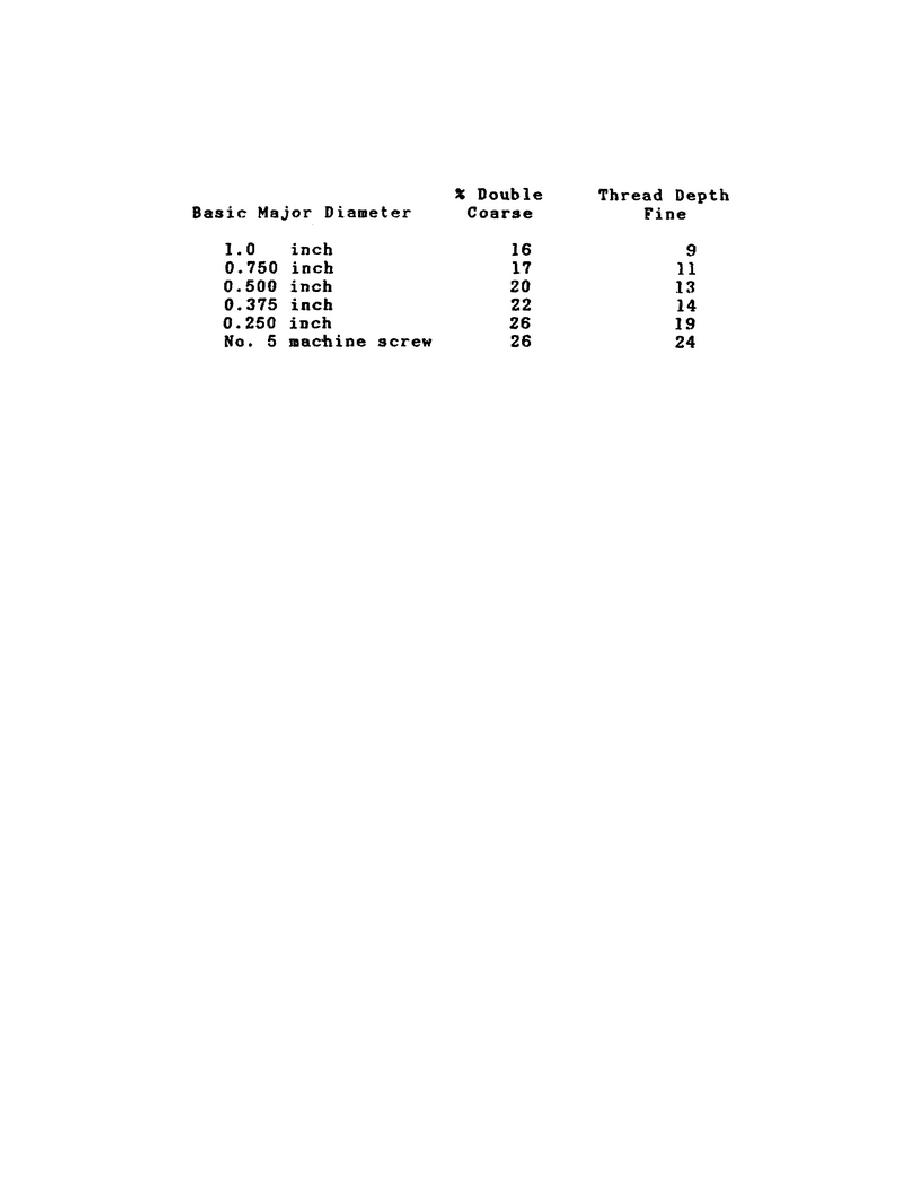
USE/CARE OF HANDTOOLS & MEASURING TOOLS - OD1621 - LESSON 2/TASK 2
TABLE I.
AMERICAN STANDARD SCREW THREADS.
(b) Nature of Material Being Tapped. Soft metals such as copper,
aluminum, monel metal, nickel silver, and the low melting point alloys have
a tendency to flow towards the root of the minor diameter of the tap while
being tapped. The minor diameter of tapped holes in such material will be
smaller after tapping. Take this into consideration when selecting the tap
drill of sufficient size.
Use the smallest thread depth possible on
materials that are very tough or of high hardness. This is accomplished by
using the largest drill possible, which nevertheless will be smaller than
the one used for softer materials, under similar circumstances.
(c) Depth of Tapped Hole.
Larger tap drills giving 50 percent
thread depth may be used when holes are deeper than 1 1/2 times the tap
diameter. Punched holes often cause binding and tap breakage, especially in
thin sheet metal, which creates an "oilcan" effect.
When the hole is
punched, the metal is flared out. As the tap is reversed after threading,
it draws in this flare and binds. Consider this when selecting the punch
size. The larger the punched hole, the less tendency for the tap to bind.
Holes formed in castings and forgings should be checked for 75 percent
depth, and reamed to size if necessary before tapping.
(2) Tapping a Hole.
(a) After the proper size and type hole (figure 140 on
the
following page) is drilled and cleaned, secure the tap in a tap wrench.
(b) Apply cutting oil to the tap and to the hole. Place the point
of the tap in the hole and rotate the tap (figure 141 on the following page)
clockwise for right-hand threads and counterclockwise for left-hand threads.
182



 Previous Page
Previous Page
